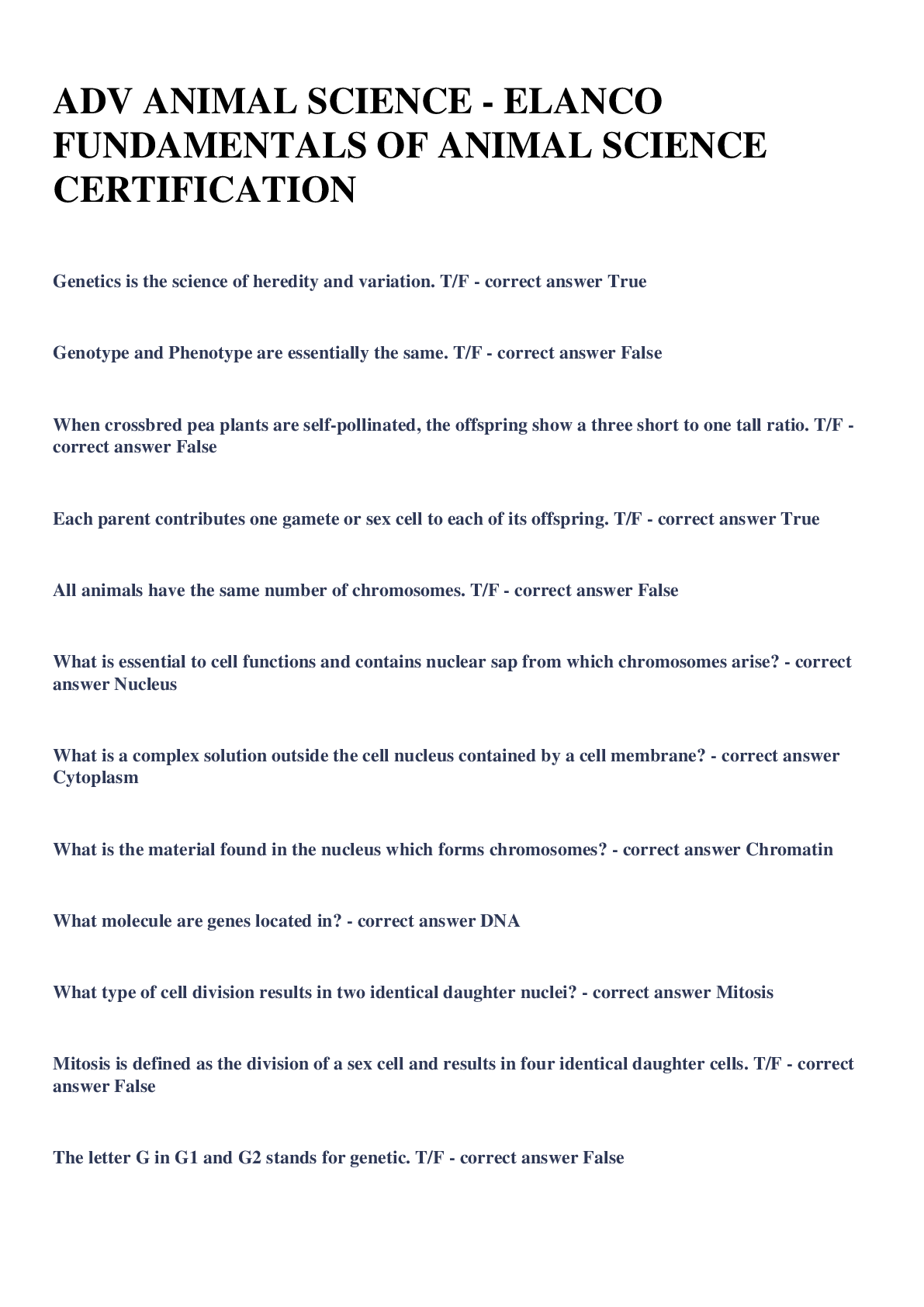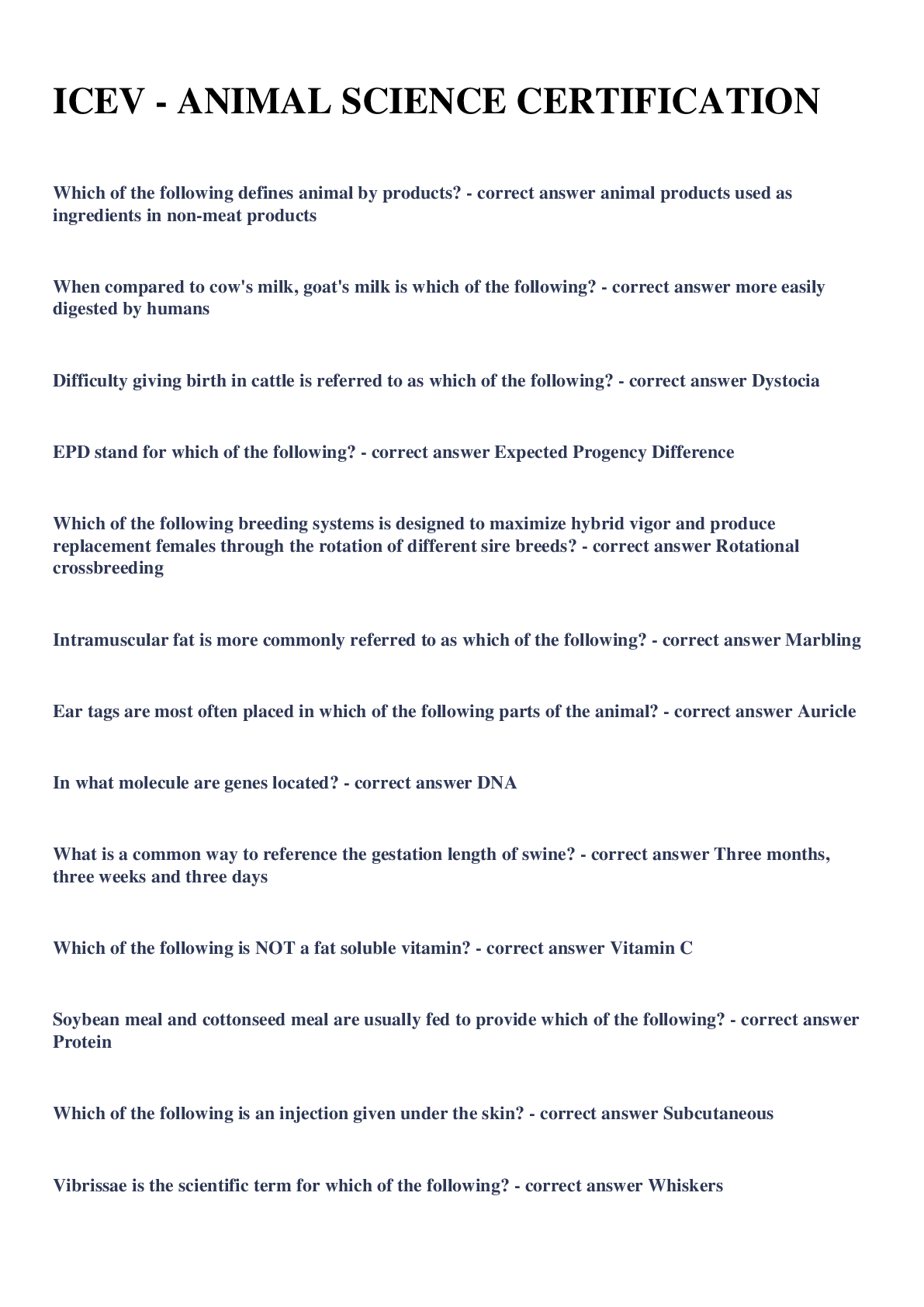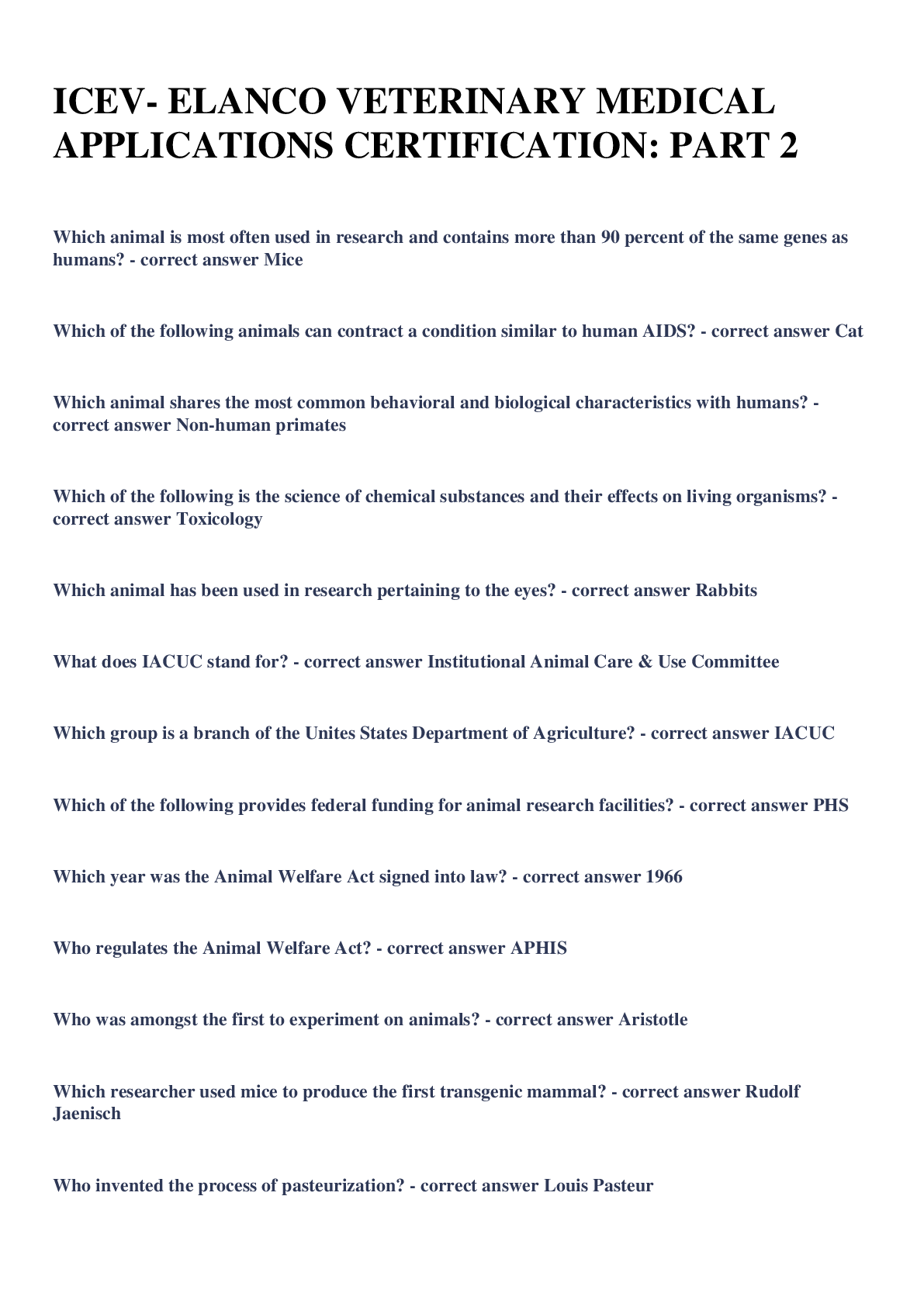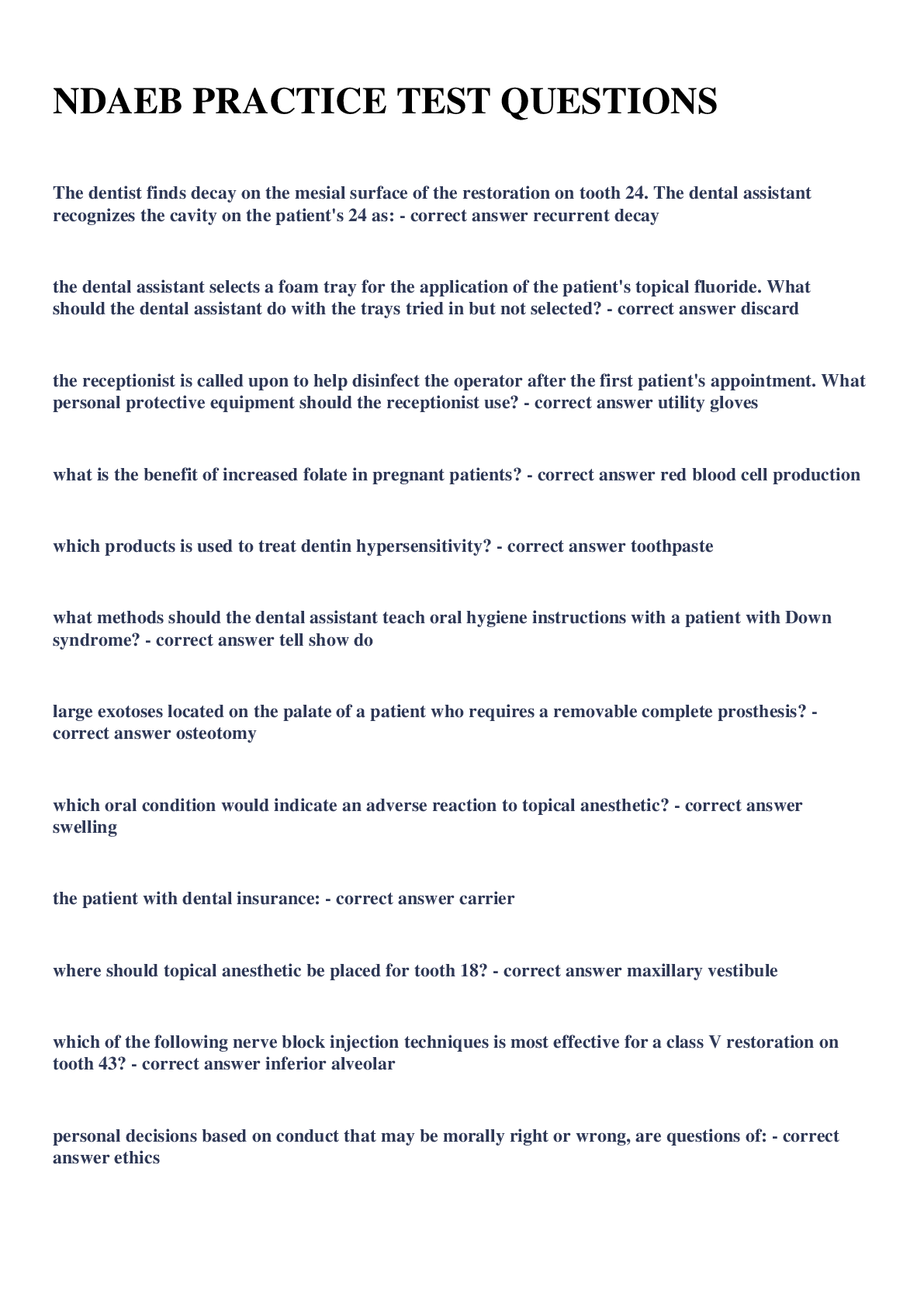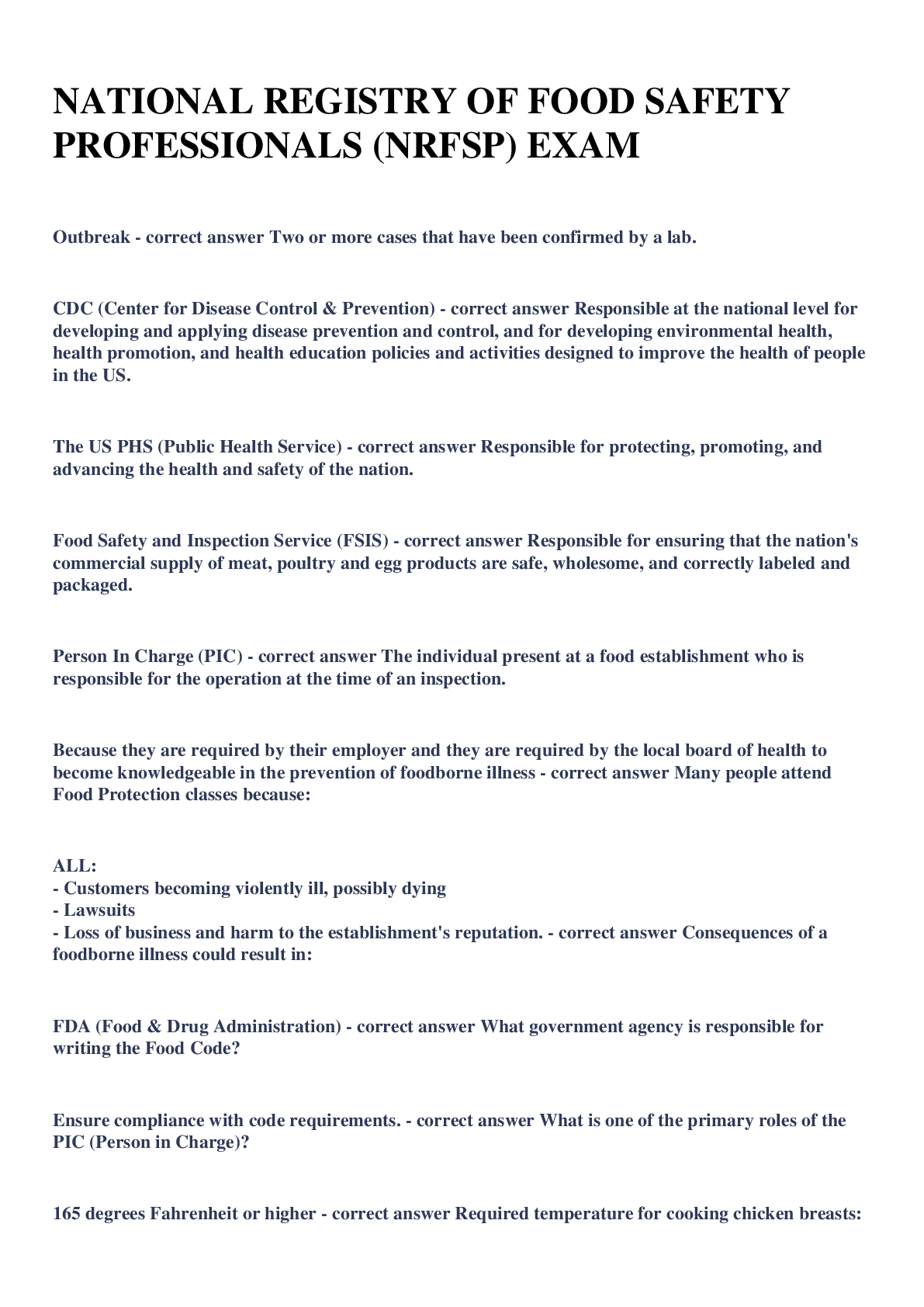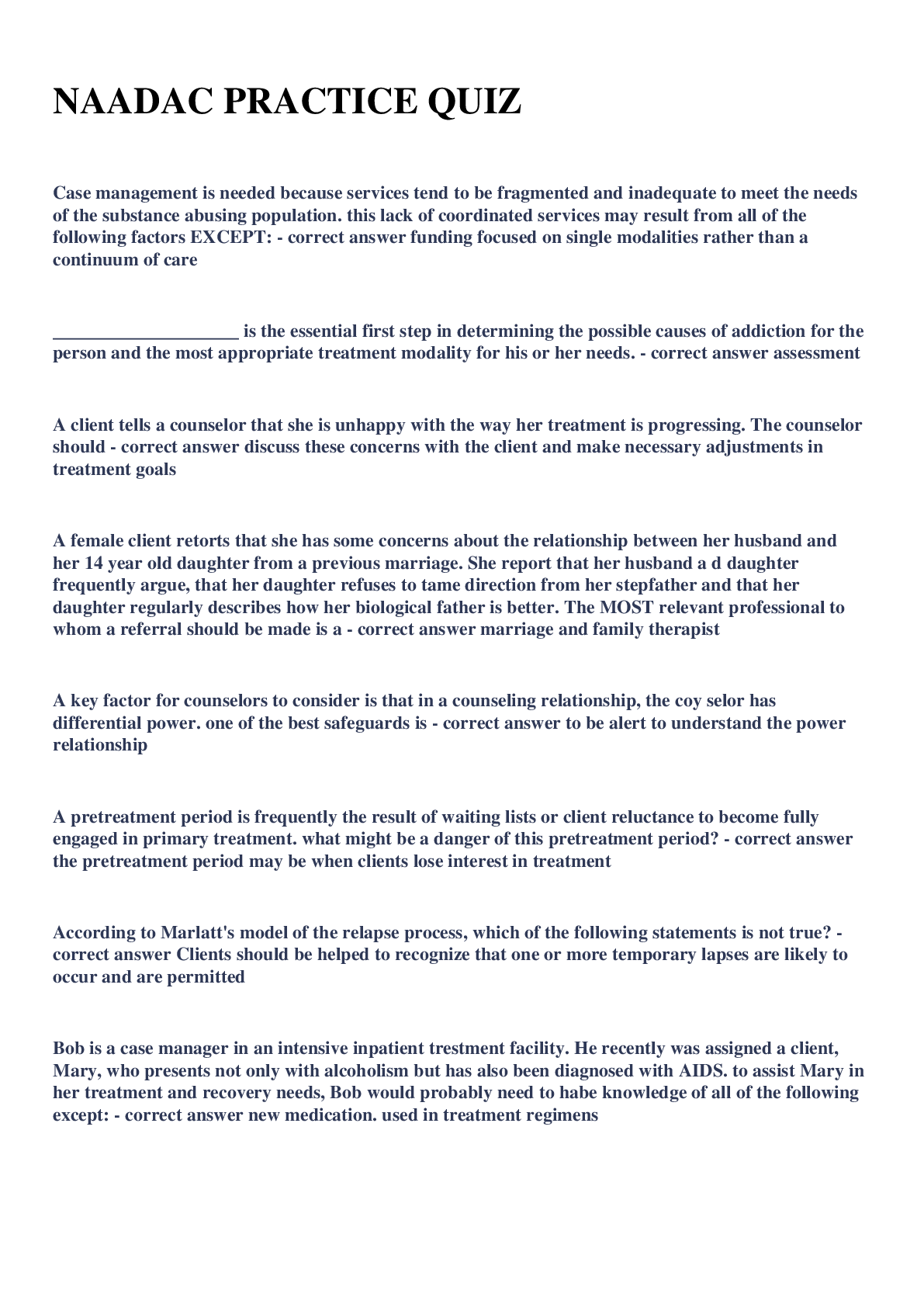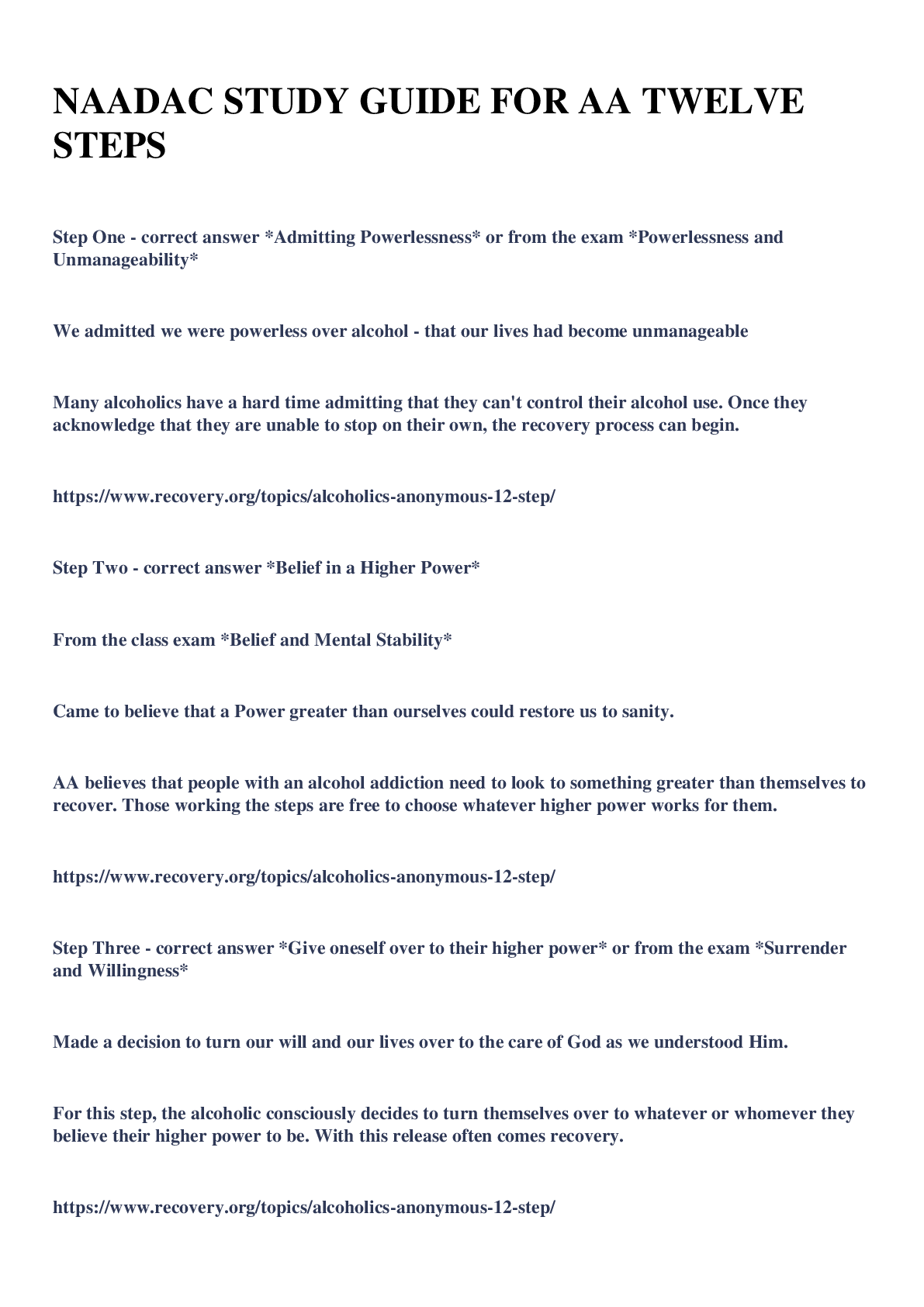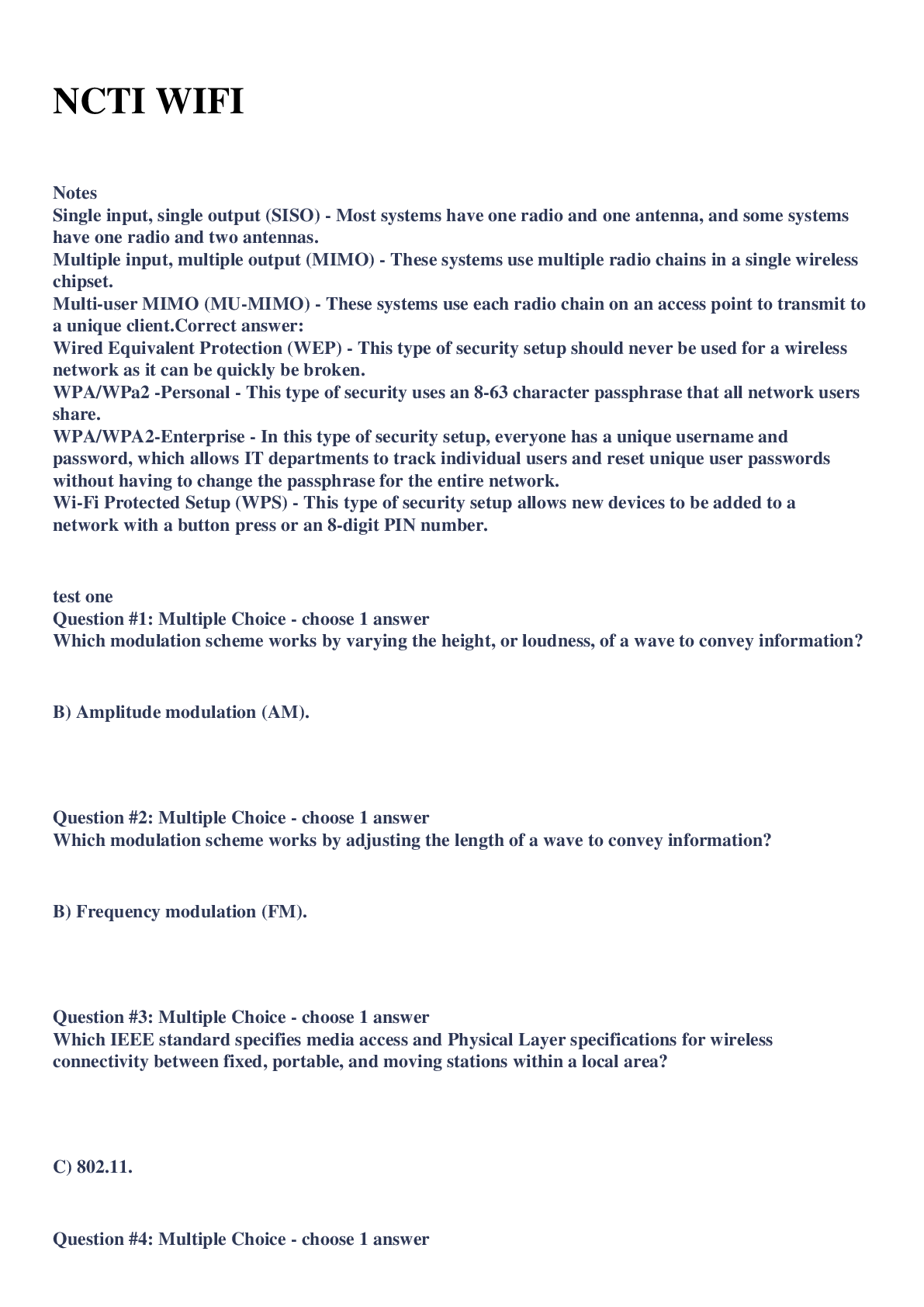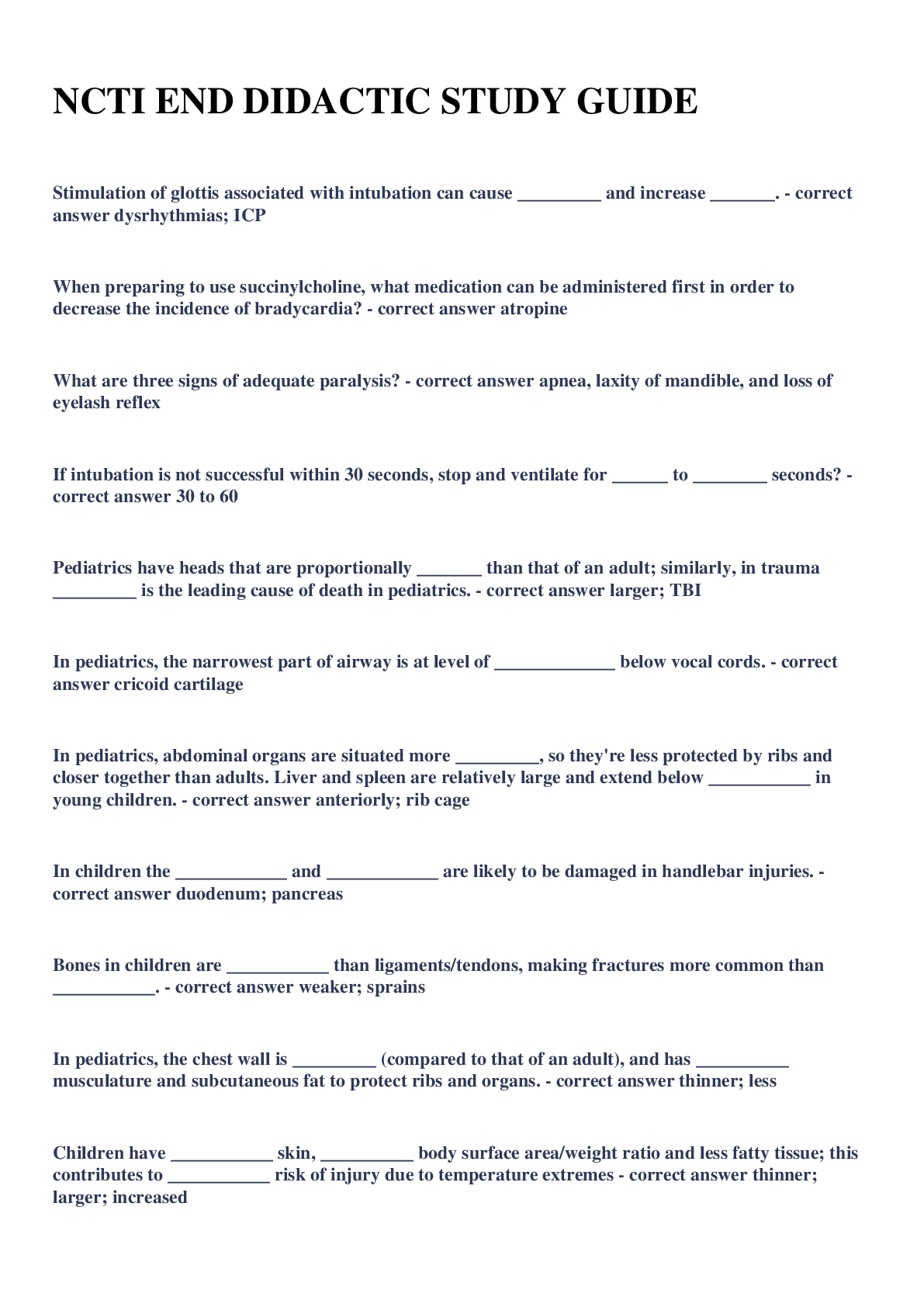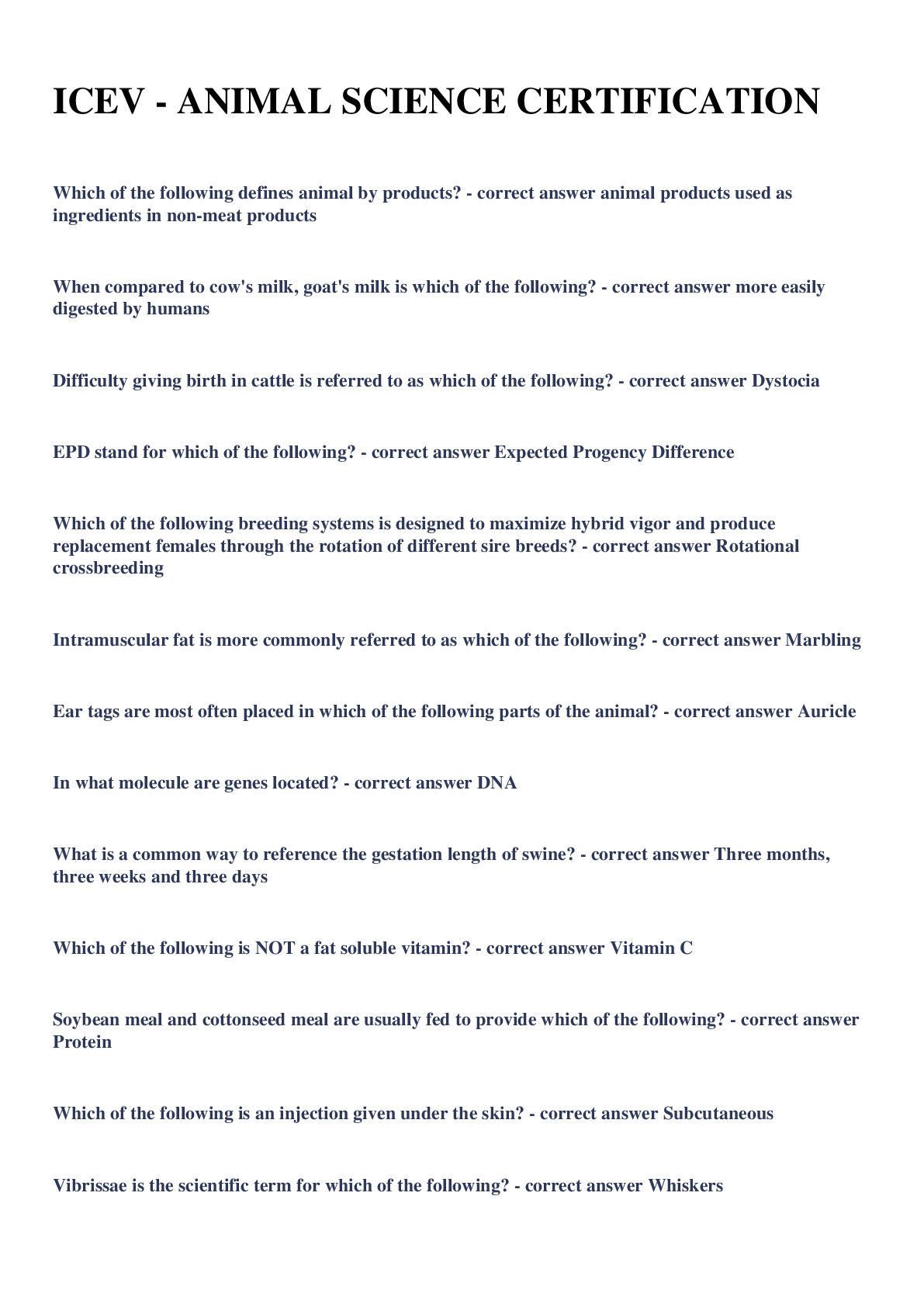*NURSING > A-Level Mark Scheme > NDAEB review 2023 LATEST UPDATE (All)
NDAEB review 2023 LATEST UPDATE
Document Content and Description Below
Describe the location of the following cranial bones 1. Frontal 2. Temporal 3. Parietal 4. Sphenoid 5. Occipital 6.Ethmoid 1. forehead 2.Sides 3.Roof 4.Anterior Base 5. Base 6. Orbit and F... loor Describe the location and function of the four types of teeth; 1. Incisors 2. Canine 3.Premolars 4.Molars 1. Front of mouth/ cutting food 2. Back of mouth/ grasping and tearing 3.Corner of mouth/ cutting and tearing 4. Back of mouth/ chewing and grinding Describe the location of the following facial bones; 1. Zygomatic 2. Nasal 3.Inferior Conchae 4. Maxillary 5. Lacrimal 6.Mandible 7. Palatine 8. Vomer 1. cheeks 2. Nose 3. Interior nose 4.upper jaw 5.orbit 6.lower jaw 7. hard palate 8.base of nose Identify the four tissues of the teeth and their makeup Enamel- the outer covering of the coronal portion of the tooth Dentin- makes up most of the tooth and is reparative Cementum- the outer layer of the root structure for attachment Pulp- contains the nerves and blood of the tooth Describe the age of eruption for the following permanent maxillary and mandibular teeth 1. central incisors 2. Canines 3. Second Premolars 4. second molars 5. lateral incisors 6. first premolars 7. first molars 8. third molars 1. 6-8yrs 2. 9-12yrs 3.10-13yrs 4.11-13yrs 5. 7-9yrs 6.10-11yrs 7. 6-17years 8. 17-21yrs Describe the roles of each professional in an emergency situation. 1. business assistant 2. chairside assistant 3. dentist 1. calls emergency services (911) 2. Retrieves oxygen/ drug kit and assesses patient 3. remains with patient and determines patient needs How would you respond to a patient with hypoglycemia? 1. Administer concentrated sugar under patients tongue 2.Ready CPR if needed 3. Monitor and record vital signs How would you respond to a patient with syncope? 1. place patient in supine position 2.Prepare ammonia inhalant 3.Prepare oxygen if needed 4. monitor and record vital signs describe the ABCDs of CPR A= Airway. Check to make sure pt's airway is open B= Breathing. Identify if patient is breathing on his or her own, if not respond by giving 2 breaths C=Circulation. Identify a pulse. If no pulse, respond by administering chest compressions. D= Defibrillation. Administer external defibrillation, if necessary How would you respond to a patient with anaphylaxis? 1. position pt in supine position 2. prepare epinephrine for administration 3. prepare CPR if needed 4. Monitor and record vital signs The following drugs can be found in an emergency kit. For what emergency is each drug prepared? 1. epinephrine 2. Antihistamine 3. Diazepam 4. Nitroglycerin 5. Inhaler 6. Ammonia Inhalant 1. acute allergic reaction 2.allergic response 3.seizure 4.chest pain 5.asthma attack 6. respiratory stimulant Describe the following methods of disease transmission. 1. Direct 2. Indirect 3. Splash/splatter 4. Airborne 5. Dental unit waterlines 1. contact with infectious lesions 2.contact with a contaminated object 3.Blood Saliva and body fluids 4.Microorganisms in spray, mists, and aerosols 5.Microorganisms in water from dental unit 1. Define disinfection 2.Describe the spray-wipe-spray technique 1. Killing or inhibiting pathogens from growth by the use of a chemical agent 2. Spray- thoroughly spray the surface Wipe- wipe the surface Spray- spray with disinfectant for recommended time Describe the following diseases and their effects; 1.Hepatitis B 2.Human Immunodeficiency virus (HIV) 3.TB (tuberculosis) . 1. Bloodborne virus that affects the liver and is transmitted by body fluids 2.Bloodborne virus that affects the immune system and is transmitted by body fluids 3. Bacterial infection that mostly affects the lungs Describe the following sterilization methods 1. steam sterilization 2.Chemical vapor sterilization 3.dry-heat sterilization 1. superheated steam under pressure for a recommended time(250*F, 20min, 15-20PSI) 2.Superheated chemical under pressure for a recommended time (270*F, 20-40 min, 20 PSI) 3. Superheat with no moisture or chemical for recommended time (340*F, 60 mins) What are the 4 components of PPE and how do they protect the caregiver? 1. Protective clothing protects the skin and under clothing from exposure 2.A protective mask prevents the inhalation of infectious organisms. 3.Protective eyewear protects the eyes from aerosol and debris 4.Protective gloves prevent direct contact with contaminated objects Describe the following parts of a hazard communication program; 1. written program 2. chemical inventory 3. MSDS 4.Labelling 5.training 1. document maintained to identify employees who are exposed to hazardous materials 2.Comprehensive list of chemicals used in the dental office 3. Info by the manufacturer describing the physical and chemical properties of a product 4. All containers labeled with name of product and any hazardous material 5. Training required for 1-new employees, 2-when a new chemical is acquired and 3- yearly for continuing education 1. Define three types of radiation protection methods for the patient? proper film exposure technique use of film holding instruments lead apron and collar Define 2 types of radiation protection methods for the operator? personal monitoring and equipment monitoring Describe the positioning of the film, tooth and central ray for the paralleling technique the film is parallel to the long axis of the tooth the x-ray beam is directed to the right angle of the film and the long axis of the tooth Describe the positioning of the film, tooth and central ray for the bisecting technique the film is angled to the long axis of the tooth the space between the film and tooth bisected the x-ray beam directed perpendicular to the bisecting line [Show More]
Last updated: 1 year ago
Preview 1 out of 8 pages
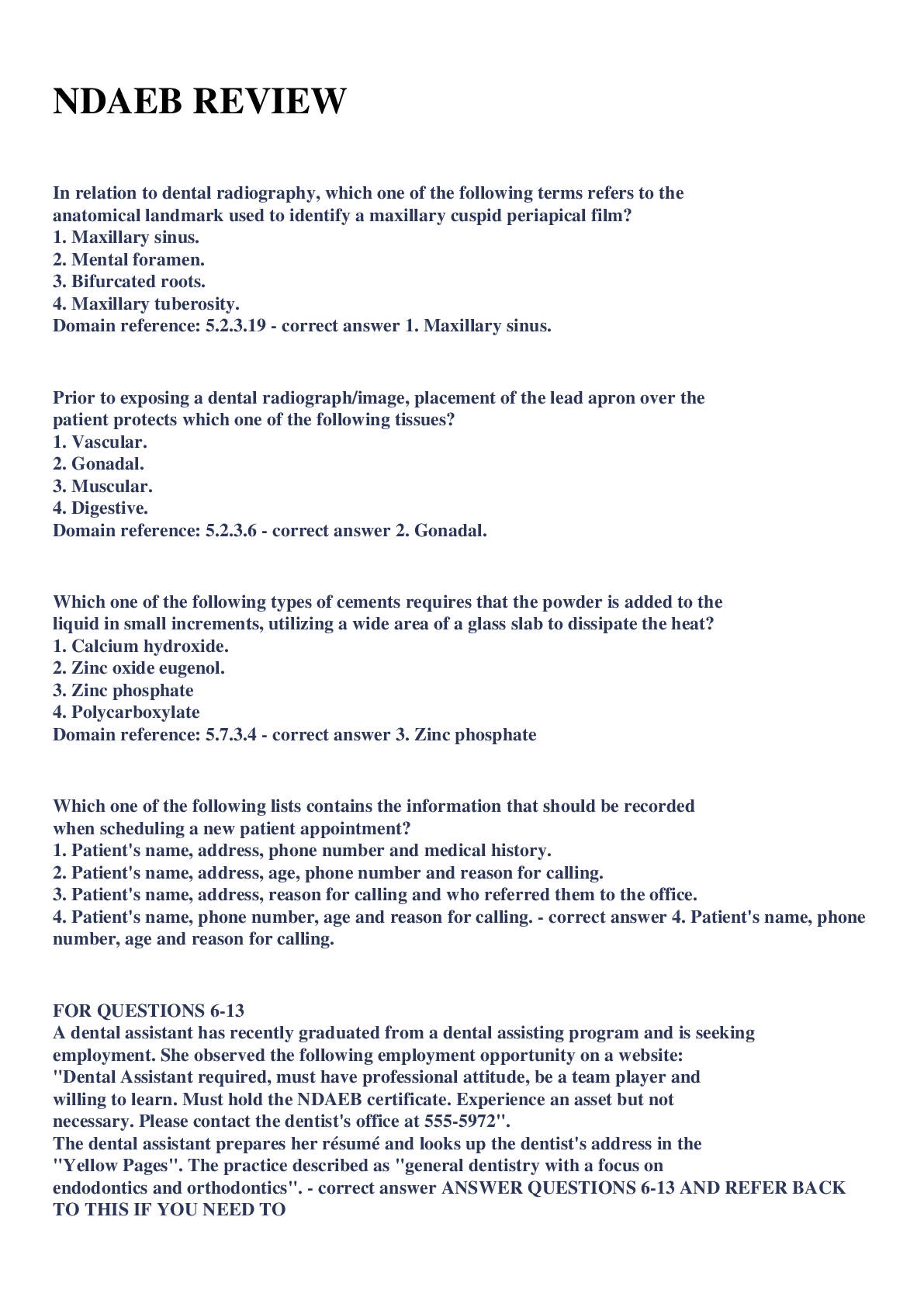
Buy this document to get the full access instantly
Instant Download Access after purchase
Buy NowInstant download
We Accept:

Reviews( 0 )
$13.00
Can't find what you want? Try our AI powered Search
Document information
Connected school, study & course
About the document
Uploaded On
Aug 18, 2023
Number of pages
8
Written in
Additional information
This document has been written for:
Uploaded
Aug 18, 2023
Downloads
0
Views
76


